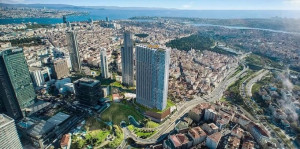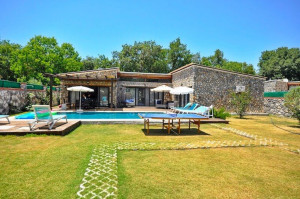Ah! The delightful Turkish Riviera, the perfect setting to let your hair down and enjoy the great outdoors. Also called the Turquoise Coast, this section of Turkey is a fantastic collection of beautiful beaches, ancient cities, modern towns and coastal villages. Let's not forget those gorgeous Turquoise waters that have earned it that nickname.
Don't assume that, like the French equivalent, the Turkish Rivera / Turquoise coast is about luxury and fine dining. Even budget-conscious travellers enjoy Mediterranean waters and coastal delights. From water sports to boat trips or hiking the Turkish coast, this destination beckons everyone worldwide with pure beauty and freedom.
Such is the coastline's popularity; many people buy homes in coastal towns, either to use as summer holiday homes or even permanent living after retirement. After all, who doesn't want that endless life in the sunshine. So, if we piqued your interest, read on to learn more about this unique part of Turkey.
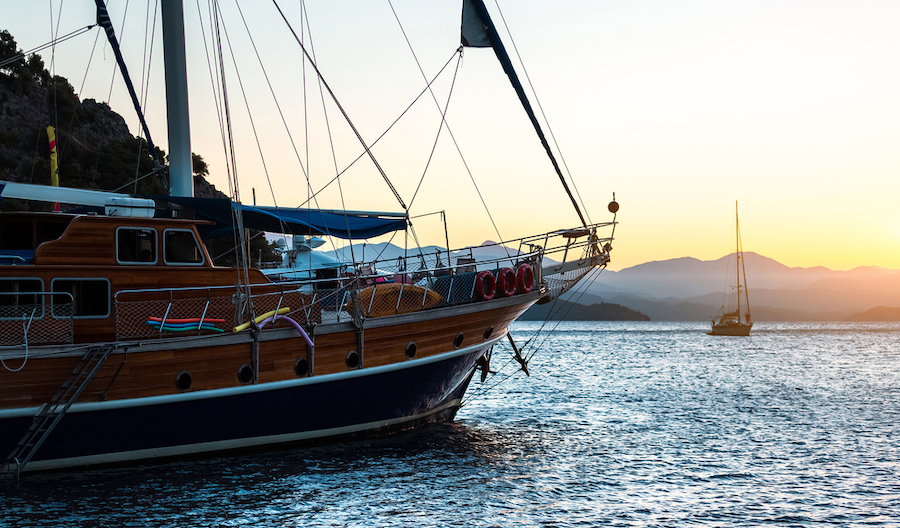
About the Turkish Riviera / Turquoise Coast
Where is the Turkish Riviera?
Even though the Turkish Riviera and Turquoise coast are synonymous, there is a slight difference. The Turkish Riviera refers to the coastline in Turkey stretching from the northern Aegean to the eastern Mediterranean. The Turquoise coast doesn't include Aegean Turkey but refers to the Mediterranean. However, this article will discuss the Aegean and Mediterranean coasts because both are stunningly beautiful.
Need to Know: Within the Turkish Riviera, there are Blue Voyage cruises. These set sailing routes depart from numerous towns to sail the coastline and head to the Greek islands. Blue Voyage cruises are big business in Turkey and contribute heavily to sailing scenes. They last 3 to 4 days, or guests can extend their trip by hiring private gulet boats and going wherever they fancy.
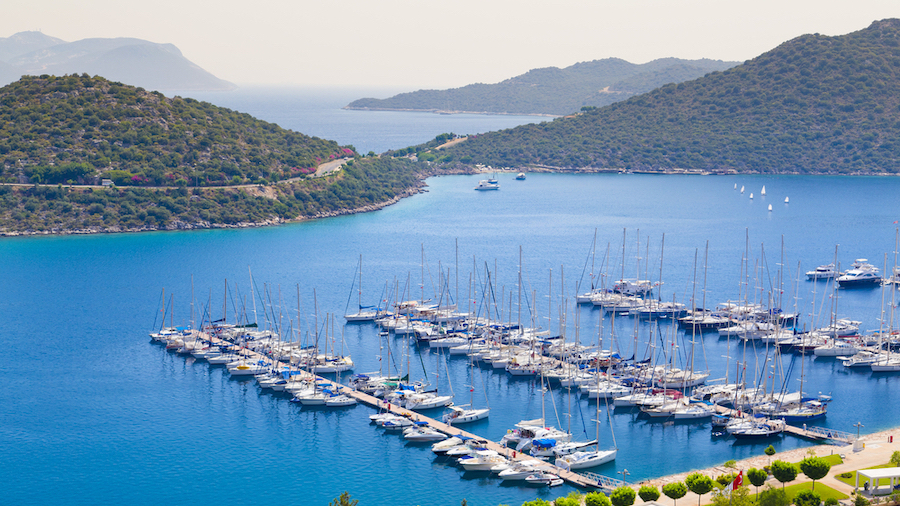
Which Airport to Fly Into
Dalaman Airport (DLM): Sitting in the heart of the Mediterranean coastline, Dalaman Airport, an award-winning travel hub services millions of passengers annually. Dalaman airport, used to get to Marmaris, Fethiye, Dalyan, Dalaman, and Gocek caters to domestic and international flights and focuses on seasonal tourist traffic during summer.
Antalya Airport: As Turkey's top tourist airport, Antalya airport is used to access the larger province, which includes Alanya, side, Kemer, Belek, Antalya city centre, Kas and Kalkan. Antalya Airport also has longer flight schedules than Dalaman.
Bodrum Airport: While the other two airports cover the Mediterranean, anyone exploring the Aegean Turkish coastline should use Bodrum Airport. This is used to access Kusadasi, Altinkum, Datca coastal resorts, and the Bodrum peninsula.
History of the Turkish Riviera
One man, an intense writer extremely passionate about his work, can take credit for Blue Voyage routes of the Turkish coastline. Cevat Sakir Kabaagacli, also known as the Fisherman of Halicarnassus, made Bodrum famous when he was exiled to Bodrum from Crete in 1925. His published work had upset affluent people, and his exile was the perfect opportunity to indulge in another of his hobbies: travel.
Upon arriving in Bodrum, he began exploring and instantly discovered more pleasant ways to travel by hiring private boats from local fishermen. Over time, his travels extended from days into weeks and into months. Friends often joined him, and vessels were adapted to accommodate them overnight. Words soon spread of Cevat's travels, and with his friend Azra Erhat, he penned the term Blue Voyage, wrote a book and the Turkish Riviera concept was born. These days, blue cruises are big business.
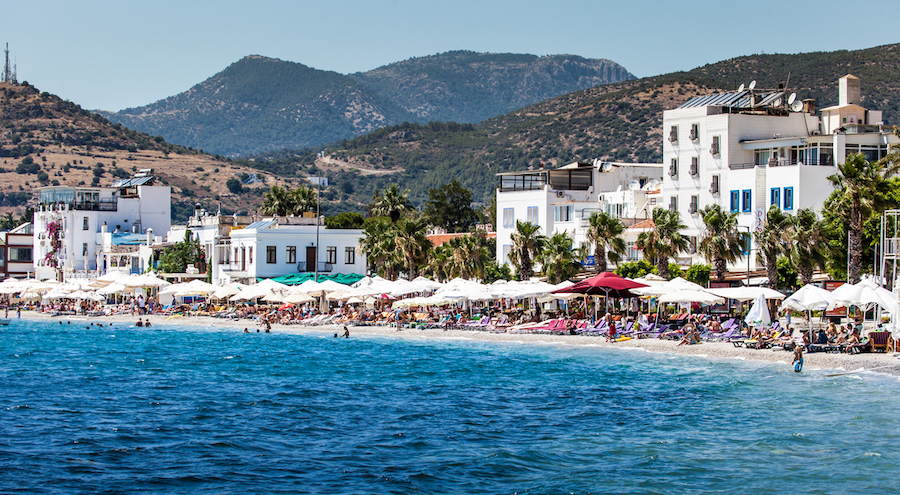
Traditional Gulet Boats
Turkish gulet boats sailing Blue Cruise routes have adapted to supply all modern facilities and comfortable decor. However, for construction, old-fashioned methods are still strictly adhered to. Male boat workers, meticulously constructing boats by hand, do not stray from skills handed down through generations of their families. In particular, sleepy Bozburun village is highly respected for its gulet boat construction skills.
At the same time, tour operators in Bodrum and Fethiye boast intricate knowledge and excellent service while sailing in Turkey. In some areas, you can hire a private luxury yacht to sail in a modern style. You can also jump on board the boat day trips if you don't want to do an overnight stay. Day cruises often include lunch as well as swimming stops.
Weather Conditions and the Best Time to Sail in Turkey
Turkish Riviera operators run cruises from May to October because these are ideal daytime temperatures outside the rainy season. April, May, October, and November are sunny during the day. Still, temperatures drop at night, so guests sometimes book into hotels rather than sleep on the boat. From June to September, nighttime temperatures heat up.
What to Pack for a Gulet Cruise
Swimwear is necessary because most of the day is spent relaxing, swimming, or snorkelling. Go inland and explore historical attractions and local landmarks at specific points, so pack good walking shoes, shorts and T-shirts. An important point to remember is that while you are at sea, the calm wind and warm waters make the daytime weather deceptive. Although it may not appear hot, pack lots of sun cream. Nighttime is about relaxing in seaside restaurants, so casual but conservative clothing is standard protocol. Remember to pack light jackets or cardigans for the months mentioned above.
Private or Cabin Charter
Although more expensive, a private charter offers privacy, and the captain usually accommodates most requests of where to go and what to see. Large groups of friends or family find this option cost-effective. Cabin charter is about making friends and sharing a boat with strangers. This is most suitable for friendly people who want to mingle and interact with others. This option is considerably cheaper than private hire.
Life on Board the Blue Water
Waking at your leisure, enjoy a traditional Turkish breakfast on board. Essential ingredients include olives, cheese, tomatoes, cucumbers, bread, eggs, and honey. After breakfast, the captain gears up the engines and sails to the following location. All captains have detailed knowledge of Turkey's coastlines, including swimming spots, exploration routes and scenic landscapes, so they will drop anchor at various points.
Some gulet boats are equipped with Jet skis, fishing gear and snorkelling equipment, accommodating sporty types and kids. Also, enjoy other activities and day trips to popular destinations. At sunset, the captain docks into the harbour, and guests wander the town or dine in local restaurants. Hotel accommodation is available if passengers do not want to sleep on board; however, sleeping on deck under nighttime stars while sailing the Mediterranean is not to be scoffed at.
Do You Have to Stay on the Boat?
No, but this is all part of the fun. If you don't want to sleep on the boat, dock into one of many shoreline locations at night. Some feature beautiful boutique hotels, while others specialise in all-inclusive resorts or luxury 5-star hotels with outdoor pools. There are many accommodation options with additional activities, and you can also combine your sailing holiday with a beach weekend.
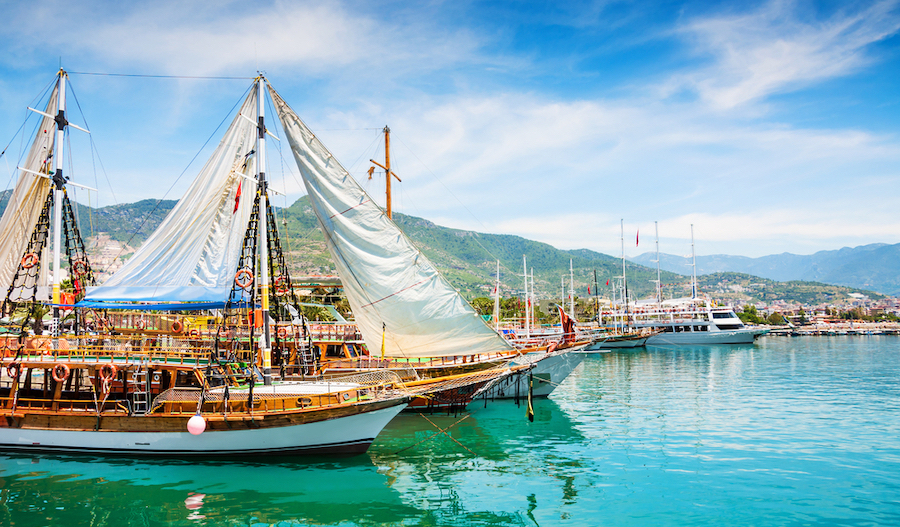
Historic Sites on the Turquoise Coast
Don't think the Rivera is all about sailing. One activity is anchoring in various towns to see historical sites. Unlike its French counterpart, the Turkish Riviera also boasts many historical attractions dating from the Lycian, Lydia, Byzantine, and Ottoman eras. Turkey's Aegean and Mediterranean coasts are dotted with various historical ruins that witness rich and diverse history, and these historic sites, from ancient Greek and Roman settlements to Byzantine and Ottoman structures, portray centuries of human civilisation.
Ancient Ephesus City: Our journey begins in western Turkey, where historic Ephesus testifies to the grandeur of ancient Rome. Once a thriving metropolis and centre of trade, Ephesus was home to the Artemis Temple, one of the Seven Wonders of the Ancient World. The well-preserved ruins of Ephesus include the Library of Celsus, Great Theatre, and Temple of Hadrian, offering visitors intriguing glimpses into daily life in the Roman Empire.
Xanthos and Letoon: Xanthos and Letoon are two closely related historical sites in southwestern Turkey, each with a unique history and significance. Both sites are UNESCO World Heritage Sites. Xanthos, also known as Xantos or Xanthus, is near modern-day Kınık in the Antalya Province. It was the capital of ancient Lycia, an ancient region from the 15th century BCE to the 2nd century CE. Letoon is located about 4 kilometres south of Xanthos, near Kumluova. It was a religious centre in ancient Lycia and closely associated with Xanthos.
Historical Olympos: Olympos is near Kemer town in the Antalya Province. An ancient Lycian city with Hellenistic, Roman, and Byzantine remains, Olympos features well-preserved structures like a Roman theatre, necropolis, and Temple of Hephaestus.
Beautiful Phaselis: Located near Kemer, Phaselis, an ancient coastal Greek and Roman city boasts three harbours and a well-preserved aqueduct, theatre, and agora. The city's location made Phaselis, an important trading hub in antiquity.
Myra / Demre: Myra is near modern Demre in Antalya Province. Known for its rock-cut tombs and a well-preserved Roman theatre, Myra was an ancient Lycian city with a rich history. Besides Myra, Demre is known for the Byzantine Church of St. Nicholas, which houses Saint Nicholas's tomb, also known as Santa Claus.
Famous Aspendos: Aspendos, renowned for Turkey's best-preserved Roman theatre, is still used today for performances due to exceptional acoustics. This historical site is also the top attraction in the Antalya region.
Side Town: Situated on a peninsula near Manavgat and Selimiye villages. Side was an ancient Greek city with well-preserved ruins, including a Roman theatre, agora, and temple dedicated to Apollo. Its location offers stunning Mediterranean views.
Kekova Sunken City: The glory of Kekova, an ancient Lycian city with charming seaside settings, was unfortunately cut short due to earthquakes. But these days, Kekova is a popular attraction along with nearby Simena, famous for the hilltop castle.
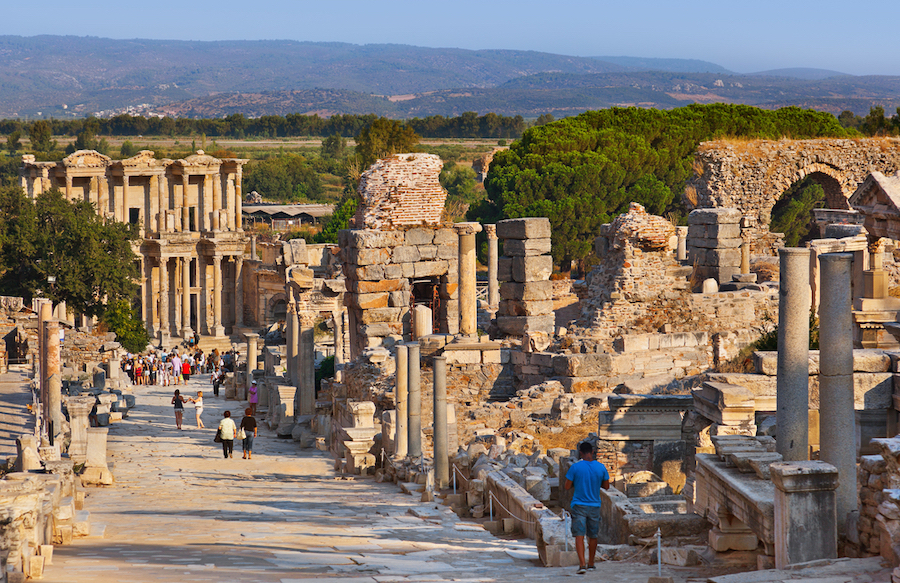
Pristine Beaches of Turkey
Konyaalti Beach, one of Turkey's most famous stretches of sand, attracts many who are looking for beach holidays rather than sailing. However, you can stop by Antalya and spend the day there. The beach season typically runs from May to October. However, some people swim in the sea in winter, thanks to the gorgeous Mediterranean sunshine. On the Izmir peninsula is beautiful Alacati, a popular windsurfing spot and a favourite holiday destination for Turks. Displaying typical Greek architecture, cobbled back streets are home to art workshops and small boutiques.
Dilek National Park, near Kusadasi, is a protected area with forests, long beaches, and small coves. Natural beauty has lured Turks to buy large villas as holiday homes in the nearby resort of Guzelcamli. This excellent swimming beach is quiet outside the primary beach season. Gokova remains unspoilt and traditional at the cusp of the Mediterranean and Aegean despite its close location to cosmopolitan Marmaris. The coastline between these two destinations has a few secluded bays. Still, it is the main beach of Akyaka that lures visitors.
Patara is a long sandy beach fronted by clear waters, but 500 metres inland are ancient ruins of a Lycian league city. Ruins include a marketplace, entrance archway and small theatre. The small village was once famous for mainstream tourism, although this has died off in favour of resorts like Kas and Kalkan. Iztuzu Beach was made famous by Captain June, who campaigned tirelessly for preservation status against construction plans to build a new hotel. Her reason for doing this was the Caretta Caretta turtle species that used Iztuzu beach to lay eggs but unfortunately faced extinction.
Butterfly Valley and the Blue Lagoon are within close distance of each other. Butterfly Valley has a hippy-inspired atmosphere, while the Blue Lagoon is Turkey's most photographed beach. The blue lagoon is a popular place for a beach holiday in the Fethiye region, boasting pristine beauty. Kaputas Beach is often featured in many travel magazines in Turkey. Despite the popularity, Kaputas beach doesn't get crowded because there are many steps down to the beach and few refreshments and snack venues.
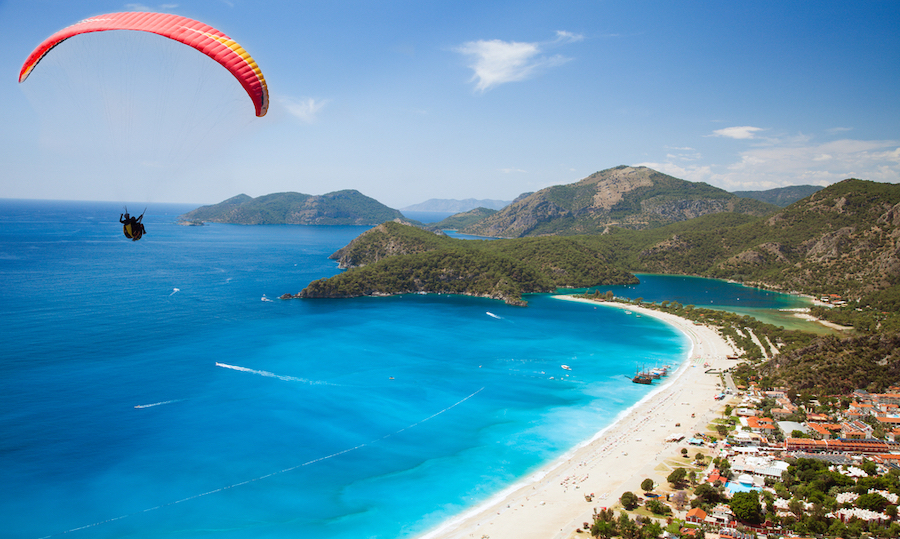
Coastal Nightlife in Turkey
Centred around restaurants directly on the coastline, nightlife is about relaxing, good conversation, and decent company. Nothing is rushed, and as to be expected, Aegean and Mediterranean cuisine is famous. Restaurants serve a variety of fish and seafood and an extensive choice of international dishes. Starter courses are traditional Turkish mezes, and dessert is often seasonal fruit to be nibbled slowly while sipping wine or the traditional Turkish alcoholic drink of Raki. Large nightclubs playing Turkish and Western dance music are in Bodrum, Marmaris, or Antalya.
What are the Main Sailing Hubs?
Antalya City Centre: Antalya, nestled along the stunning turquoise coastline of the Mediterranean, is a captivating city that seamlessly blends ancient history with the vibrancy of a modern resort destination. Renowned for picturesque beaches, crystal-clear waters, and sun-soaked climate, Antalya beckons travellers with enchanting landscapes and cultural heritage. The city's historic centre, Kaleiçi, boasts narrow winding streets lined with charming Ottoman-era houses, boutique shops, and inviting cafes, creating an atmospheric journey through time.
Antalya is not merely a beach paradise but also home to well-preserved archaeological sites, including the Roman-era Hadrian's Gate and Antalya Museum, showcasing artefacts from the region's diverse past. With blended natural beauty, historical significance, and modern amenities, Antalya stands out on Turkey's Mediterranean coast, inviting visitors to indulge in fused leisure and exploration.
Fethiye Region: Nestled on Turkey’s southern coast, this city of beauty unfolds as a captivating destination where azure waters meet lush green landscapes and ancient ruins. This coastal town, with a charming harbour and vibrant marina, is a gateway to the stunning Turquoise Coast. Picturesque Oludeniz Beach, with the iconic Blue Lagoon, draws sunseekers and adventurers alike, offering serene retreats and opportunities for paragliding above breathtaking landscapes.
Fethiye also combines modern amenities with historical allure, as evidenced by ancient Lycian rock tombs, including the imposing Tomb of Amyntas. Bustling Fethiye market, where aromas of spices and fresh produce fill the air, adds lively touches, away from the beach. Whether exploring the ghost village of Kayaköy, sailing nearby islands, or strolling along the scenic waterfront, Fethiye invites visitors to immerse themselves in natural beauty, cultural heritage, and vibrant Mediterranean spirit.
Cosmopolitan Bodrum: In southwestern Turkey, coastal Bodrum captivates all with hedonistic vibes that have attracted artisans and wealthy Turks for decades. Known for its lively atmosphere, Bodrum is a favoured destination catering to diverse interests. The town is crowned by the iconic Bodrum Castle, and Museum of Underwater Archaeology, showcasing artefacts from ancient shipwrecks.
Bodrum's harbour, flanked by white-washed buildings adorned with bougainvillaea, creates postcard-worthy scenes, complemented by bustling markets, chic boutiques, and vibrant nightlife. The Bodrum Peninsula encompasses pristine beaches, like Gümüşlük and Yalıkavak, drawing sun-seekers and water sports enthusiasts. With maritime history, lively bazaars, and cultural influences, Bodrum seamlessly merges the past with the present, inviting visitors to savour unique charm.
Lively Marmaris: Sitting on the cusp of the med and Aegean, this vast city effortlessly blends the charms of seaside retreats with rich history. Renowned for its picturesque harbour, where bobbing yachts and traditional Turkish gulets create mesmerising vistas, Marmaris exudes a cosmopolitan ambience. The town's focal point is Marmaris Castle, overlooking azure waters, and the adjacent Old Town, where narrow cobblestone streets wind through bustling bazaars, inviting exploration.
Marmaris boasts an extensive marina, lively waterfront promenade, and bustling nightlife scenes, quickly attracting those seeking relaxation and entertainment. With its proximity to stunning beaches like Icmeler and Turunc, Marmaris combines sun-soaked leisure, water sports adventures, and Turkish hospitality against the backdrop of captivating coastal landscapes.
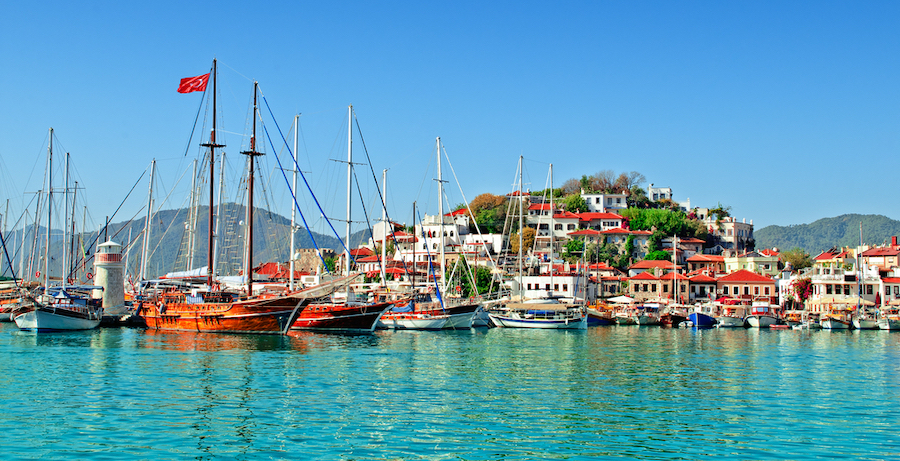
Real Estate and Properties on Turkey's Coastline
Such is the popularity of the Turkish Riviera; many Turks and foreigners buy either holiday homes, investment property, or somewhere to live permanently on the turquoise coast. The reasons why are easy to see. From the blue cruise routes to excellent swimming beaches to day cruises and the modern city centre, this area of Turkey is nothing but perfect. If this is an idea you want to explore, call us today and chat with an agent, or see our portfolio of homes for sale on the turquoise coast of Turkey.







